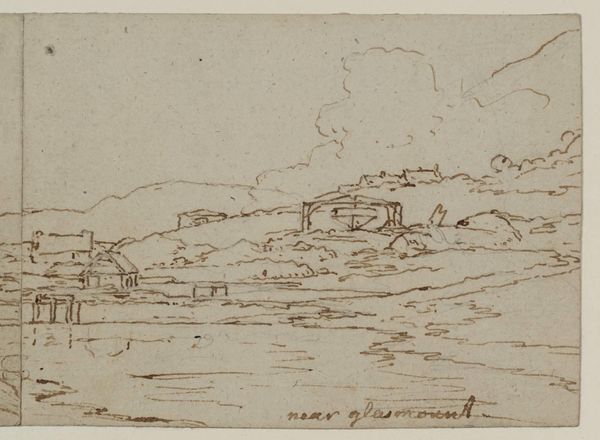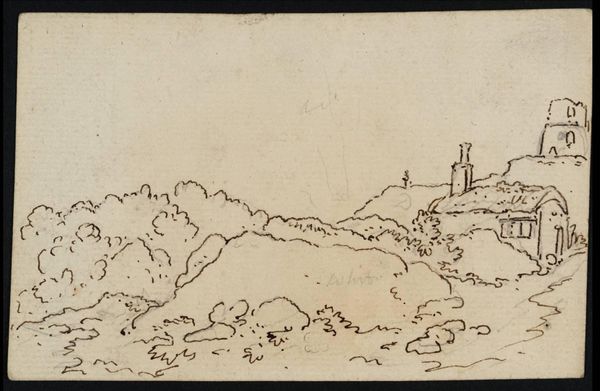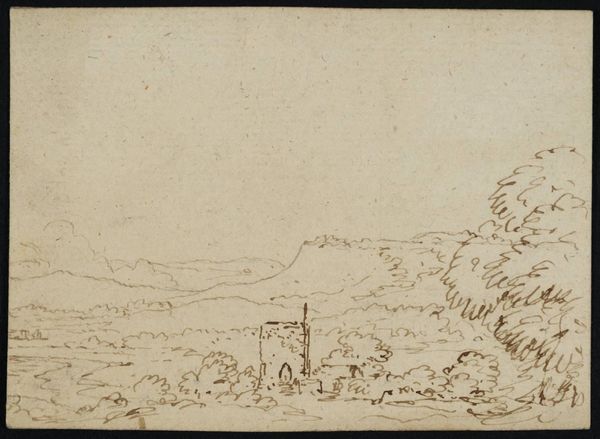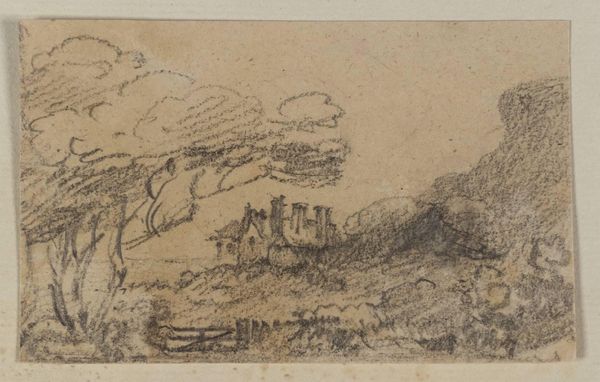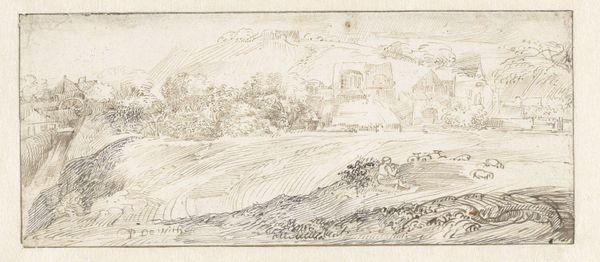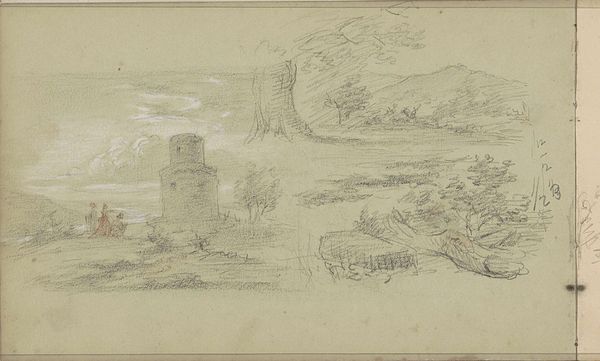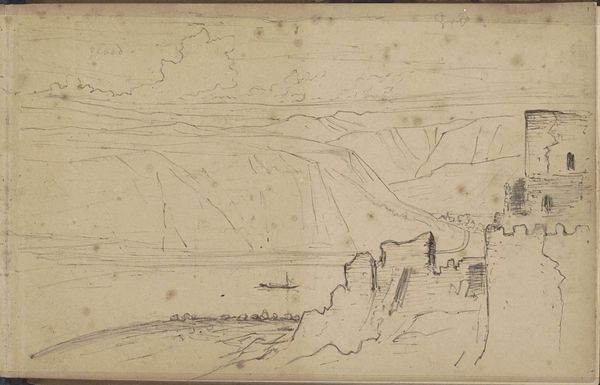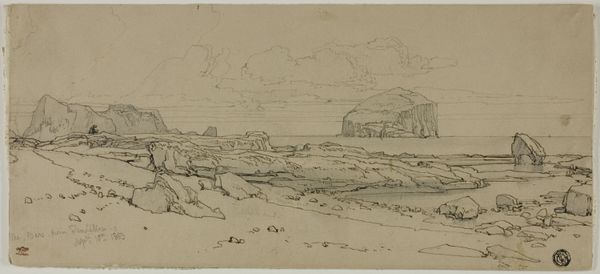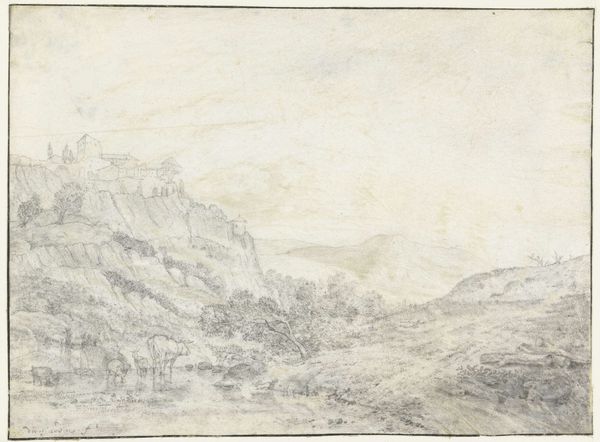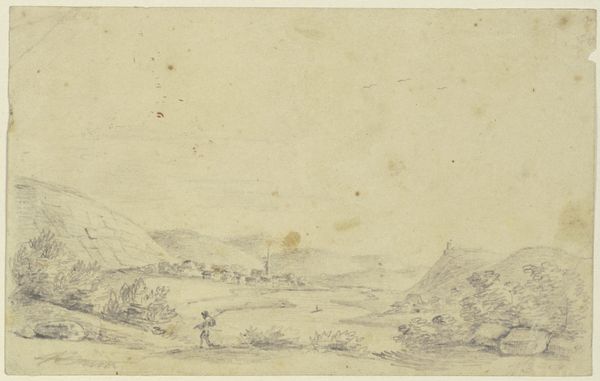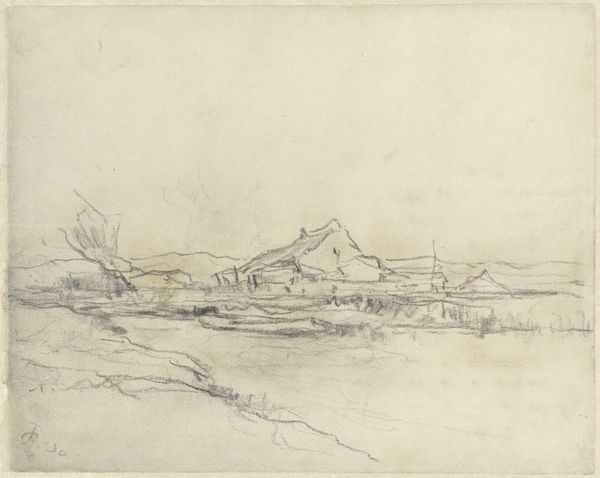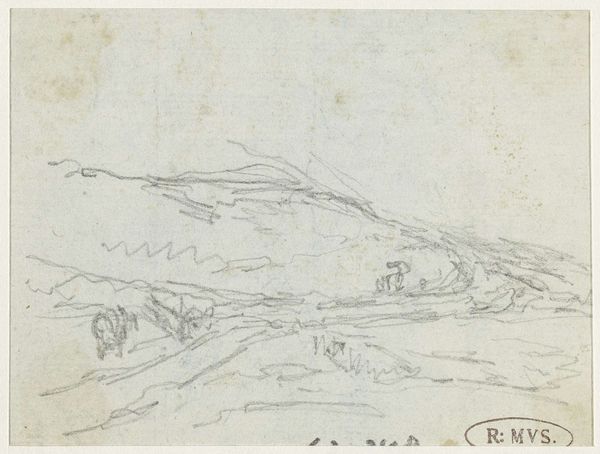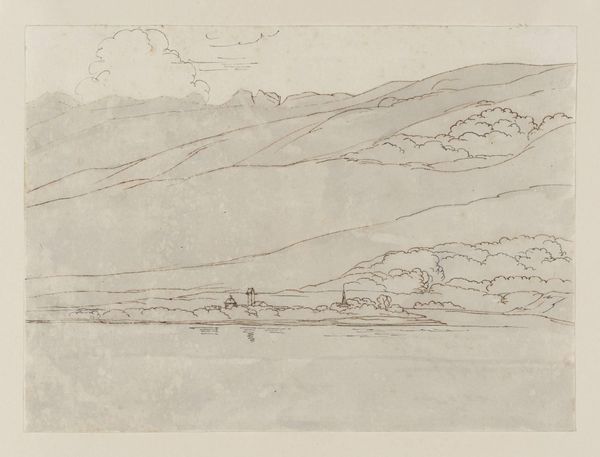
Hillsides and Buildings near the Fforest Copper Works c. 1786 - 1800
0:00
0:00
Dimensions: support: 80 x 105 mm
Copyright: CC-BY-NC-ND 4.0 DEED, Photo: Tate
Editor: This is Philip James De Loutherbourg’s "Hillsides and Buildings near the Fforest Copper Works." It's a quick sketch, maybe a study, in ink, and evokes a sense of the industrial revolution encroaching on the natural landscape. What do you see in this piece? Curator: I see a powerful commentary on industrialization's impact. The copper works aren't just buildings; they represent exploitation of both the land and its people. Do you see the smoke? It pollutes the air, symbolizing the disregard for environmental and social well-being. Editor: That's a strong interpretation. I hadn't considered the smoke as a symbol of disregard. Curator: De Loutherbourg was working during a time of immense social change. He was illustrating the cost of progress, and how some people were benefiting at the expense of others. It's a theme that resonates even today. Editor: I guess I saw it as just a landscape sketch, but it’s so much more complex. Thanks for helping me see it differently. Curator: My pleasure. Art can be a mirror reflecting society’s challenges, then and now.
Comments
tate 8 months ago
⋮
http://www.tate.org.uk/art/artworks/de-loutherbourg-hillsides-and-buildings-near-the-fforest-copper-works-d36382
Join the conversation
Join millions of artists and users on Artera today and experience the ultimate creative platform.
tate 8 months ago
⋮
This drawing comes from a group of designs by de Loutherbourg originally owned by Turner. Other drawings from this group are shown nearby. They all show Turner exploring the picturesque potential of the industrial landscapes of Shropshire and Wales. Such industrialised areas were popular with tourists. Travellers came to wonder at the achievements of modern industry, and enjoy the sublimity of the landscape. The French-born de Loutherbourg came to London to work as a theatre designer. He was a successful and highly versatile artist, especially famous for his exploration of theatrical light effects. Gallery label, September 2004
